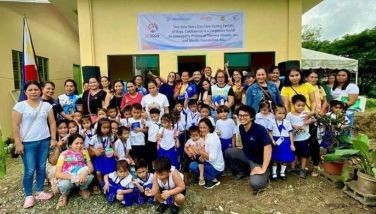DOST and Hokaido U to build micro satellite
MANILA, Philippines - The Department of Science and Technology (DOST) will partner with Hokkaido University, one of Japan’s top universities, in its effort to to come up with a Filipino-made mini or micro-satellite that it hopes to launch as early as 2016.
DOST Secretary Mario Montejo said that the premier Japanese higher educational institution has already accepted DOST’s proposal for a partnership for the country’s move to build the capability to develop and assemble on its own a micro-satellite and launch it into space in two or three years.
“We will send our people there for training, and they will also send their scientists here,” Montejo told science and technology reporters in a recent press briefing.
The program to build a micro-satellite, Montejo said was mainly a levelling up of the DOST’s multi-hazard modelling and map making capability to identify flood, storm surge, landslide and other hazard areas in the country pursued under their Project NOAH (Nationwide Operational Assessment of Hazards) and the DREAM (Disaster Risk Exposure and Assessment for Mitigation) Project, and its successful component to develop light ranging and detection (LiDAR) technology mapping.
He said that with the LiDAR mapping technology, DOST now wants to establish one remote ground sensor that will help in the information gathering for the LiDAR mapping effort.
The micro-satellite, he said, would be a key part in this whole program since it will course information orbiting in the skies over the country onto the remote ground sensor.
However, Montejo said that there were expected surprise uses in the Philippines’ having a micro-satellite of its own serving as its “eye in the sky.”
Montejo said that a micro satellite could possibly be used to regularly and efficiently watch over the Philippines’ territorial maritime waters, and relieve the Philippine Coast Guard of the need to have a fleet of vessels to regularly roam the country’s sea borders.
“Once we develop the capability, we may discover many other uses for it,” Montejo said.
Montejo said that the Remote Sensing Program, that already includes the effort to build a microsatellite was budgeted some P1.4 to P1.5 billion.
- Latest
























